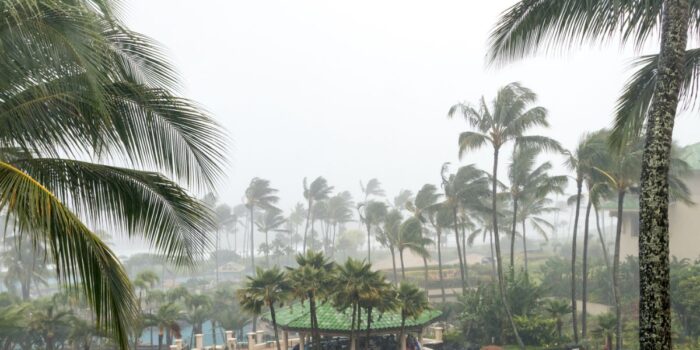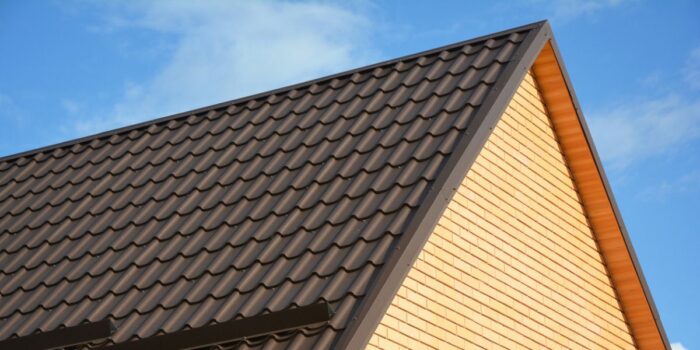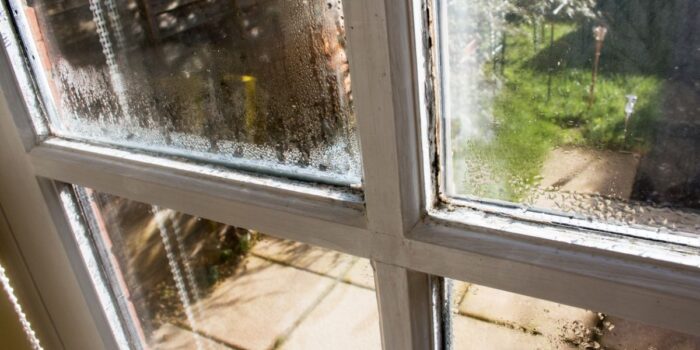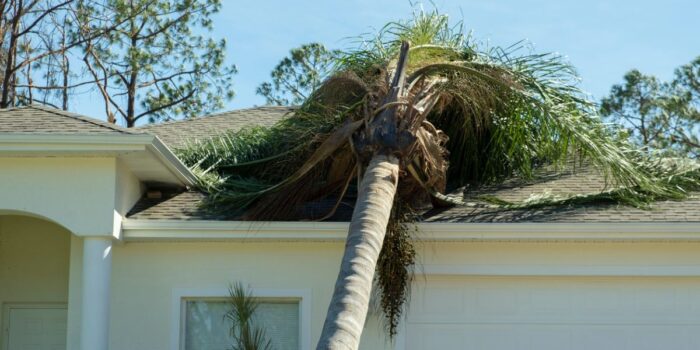Building a hurricane proof house in Florida is more than a precaution; it’s an investment in safety and sustainability. Given Florida’s susceptibility to hurricanes, designing homes that can withstand these natural disasters is not just wise but essential. In this blog, we’ll explore the importance of hurricane resistant homes, dive into the best practices for hurricane-proof design, and understand the benefits of proactively building weather-resistant homes. Additionally, we’ll discuss the accessibility and feasibility of such projects by Synergy Homes for building safer, more resilient homes.

The Concept of Hurricane Resistant Housing
Hurricane resistant homes are designed to stand firm against the high winds, heavy rains, and flying debris typical of hurricanes. These houses incorporate specific structural elements and materials to enhance durability and provide maximum protection. The concept extends beyond the mere survival of a storm; it also encompasses the efficiency and sustainability of the building, ensuring it remains a long-term, viable habitat even in harsh weather conditions.
Top 10 Design Tips for a Sustainable, Hurricane Proof House in Florida
Reinforced Concrete Walls:
Reinforced concrete, which combines the compressive strength of concrete with the tensile strength of steel rebar, provides an unmatched barrier against the fierce winds and deadly projectiles that hurricanes bring. This composite material not only absorbs and dissipates the energy from high-impact forces, effectively reducing structural damage but also enhances the overall ductility of the building structure, allowing it to flex under stress rather than crumble.
The Benefits of Concrete in Hurricane Resistant Homes:
- Immense Strength and Durability: Concrete is renowned for its exceptional strength, which is a critical factor in its ability to withstand the intense wind pressures and projectile impacts that occur during hurricanes. Its inherent robustness helps prevent structural damage that can compromise a home’s integrity.
- Enhanced Ductility with Reinforcement: While concrete is inherently strong, it lacks flexibility under stress, which is where reinforcement comes into play. Reinforcing concrete with materials like steel bars (rebar) transforms it from a brittle material into one that can bend and stretch without breaking. This ductility is vital during a hurricane, as it allows the structure to absorb and dissipate energy without suffering catastrophic failure.
- Resistance to Debris Impact: The density and mass of concrete provide excellent protection against flying debris, which is one of the primary hazards in a hurricane. Concrete walls and structures can withstand impacts from debris that would typically penetrate or damage lighter materials.
- Fire Resistance: Concrete offers a secondary benefit of being fire resistant. In the aftermath of a hurricane, fire risks can increase due to damaged electrical systems or gas leaks. Concrete’s ability to resist fire provides additional safety in such scenarios.
- Longevity and Low Maintenance: Concrete structures are not only strong and durable but also require minimal maintenance compared to other building materials like wood, which may rot, warp, or require regular treatments against pests and moisture. Concrete’s longevity makes it an economically attractive option in the long run.
- 6. Energy Efficiency: Concrete has a high thermal mass, which helps regulate the interior temperature of a home. This property can keep homes cooler in the hot Florida climate and reduce the reliance on air conditioning, leading to energy savings.
Sloped Roofing with Enhanced Trusses:
A sloped roof helps in deflecting wind rather than catching it flat. Enhanced trusses, tied down with hurricane straps or clips, anchor the roof securely to the walls, greatly reducing the risk of uplift during high winds.
Homeowner Insight:
- Opt for a roof design with multiple slopes (such as a hip roof), which offers greater wind resistance than a single slope. Ensuring that these connections are reinforced before hurricane season can prevent major roof damage.

Impact-Resistant Windows and Doors:
Install windows and doors designed to withstand the impact of debris and drastic pressure changes. These are designed to withstand violent wind and debris, which are common during hurricanes. They consist of a polyvinyl butyral (PVB) layer sandwiched between two layers of glass, which helps prevent the glass from breaking apart. Frames are typically made from sturdy, corrosion-resistant materials like aluminum or vinyl, which offer additional structural integrity.
Benefits of Impact-Resistant Windows and Doors for Florida Hurricane Resistant Homes
- Hurricane and Storm Protection: Impact windows and doors are specifically designed to withstand high winds, flying debris, and the impact of severe weather conditions like hurricanes and tropical storms that are common in Florida. They help safeguard homes and belongings from damage.
- Increased Security: The laminated glass and reinforced frames of impact windows and doors make them much more difficult to break into compared to traditional windows and doors. This added security can help deter burglaries and protect homeowners and their valuables.
- Noise Reduction: The multiple layers of glass in impact windows and doors provide excellent noise-reducing capabilities, creating a more peaceful and quiet indoor environment, especially for homes located near busy areas.
- UV Protection: Impact windows and doors block harmful UV rays from the sun, which can fade and damage furniture, flooring, and other interior furnishings over time.
- Energy Efficiency: Impact windows and doors are designed to be energy-efficient, helping reduce air infiltration and heat transfer, which can lead to lower energy bills and a more comfortable indoor climate.
- Insurance Discounts and Tax Exemptions: Many insurance companies offer discounts on homeowner’s insurance premiums for homes with impact windows and doors, and there are also sales tax exemptions available for these products in Florida.
- Increased Property Value: Installing impact windows and doors is considered a desirable feature for Florida homes, as they enhance the home’s durability, safety, and energy efficiency, potentially increasing its resale value.
- Convenience: Unlike temporary hurricane shutters, impact windows and doors provide year-round protection without the need for installation and removal before and after each storm, saving homeowners time and effort.
Elevated Structures:
In flood-prone areas, elevating your home can be a game-changer for protecting your home against flood-prone areas. Elevation can be achieved through pilings, piers, or stem wall foundations. This not only helps prevent floodwaters from entering the home but also can significantly reduce insurance rates in flood zones.
Elevate These Areas of a Hurricane Proof House:
- Overall Home Elevation
- Critical Living and Storage Areas
- Electrical and Mechanical Systems
Sealed Roofs and Water-Resistant Materials:
Using sealants such as silicone-based sprays or liquid rubber can protect the roof from water seepage during a hurricane, which is essential for preventing interior water damage. Employing water-resistant materials like treated wood, stainless steel, or specially formulated drywall can help avoid mold and structural decay post-storm.
How Hurricane Proof Houses Protect Against Mold, Mildew, and Water Damage:
Hurricane proof houses in Florida are designed with a strong focus on preventing moisture intrusion and quickly removing any standing water that may accumulate during severe storms. The use of water-resistant building materials, such as concrete, fiberglass, and waterproof membranes/sealants, is crucial. These materials do not provide the organic food sources that mold and mildew need to grow and spread, helping to create an inhospitable environment for these fungi.
Proper drainage systems and adequate ventilation are also key features of hurricane-proof homes, as they quickly remove excess moisture and prevent the damp, humid conditions that allow mold and mildew to thrive. Additionally, homeowners are advised to rapidly dry out any areas that get wet and thoroughly clean to remove any existing mold growth after a flood or hurricane. This stops mold from establishing itself and spreading further throughout the home.
Selecting mold-resistant materials like aluminum, vinyl, and synthetic fabrics can also help limit the spread of mold while elevating critical building components off the ground prevents them from being submerged in floodwaters that could lead to mold.
Secure and Seal External HVAC Units:
Ensure that external elements like air conditioning units are securely mounted and shielded to prevent damage during hurricanes, which can lead to costly replacements and repairs.
Homeowner Insights:
- It’s advisable to use hurricane straps, which are made of galvanized steel and can withstand extreme conditions, to secure the units. Additionally, using weatherproof covers or building a shield around the units can protect them from flying debris.
- In regions like the Florida Keys, homeowners often build custom concrete bunkers around their outdoor units to shield them effectively from flying debris during hurricanes.
Landscaping with a Purpose:
Opt for native, hardy plants that can survive high winds and use them strategically to create windbreaks that can reduce the wind force reaching your home.
Homeowner Insights:
- Choose wind-resistant trees and plants:
-
-
- Plants with deep root systems, dense and flexible wood
- Consider the amount of salt spray from Florida winds.
-
- Be intentional with placement:
-
-
- Positioning trees, bushes, and plants away from the home, powerlines, and other structures to prevent potential uprootings during harsh winds.
-
- Drainage and runoff considerations:
-
-
- Consider how you pot or plant your landscape. Think of flood-prone areas, low elevation, and porous pots like terracotta.
-
- Careful consideration of mulch and landscaping materials:
-
- Avoid hard, dense, or heavy mulch as they can become dangerous projectiles during aggressive wind and tornados.
Flexible Building Design:
Incorporate flexible, open spaces that allow for easy adaptation post-disaster. Rooms that can serve multiple purposes can be especially beneficial in the aftermath of a storm. This design philosophy focuses on creating spaces that can quickly adapt to post-disaster needs. The use of modular walls and multi-functional rooms can allow areas of a home to be repurposed or renovated easily if one section is damaged.
Types of Flexible Building Design for Hurricane Resistant Homes:
- Open Floor Plans
- Integrated Storm Shelters
- Multifunctional Rooms
- Example: Design a hurricane proof house where a home office that can be converted into a safe room with reinforced walls and emergency supplies. Installing sliding or folding partitions can help reconfigure spaces quickly in response to changing needs.
Energy Efficiency Considerations:
Implementing energy-efficient and sustainable technologies ensures that a home can function independently during and after disasters. Solar panels can provide a critical power supply during outages, while rainwater harvesting systems offer an alternative water source when municipal systems may be compromised.
In a hurricane-prone area, a home equipped with a battery storage system or generator paired with solar lights can maintain power even during extended grid failures. Rainwater collected can be used for flushing toilets and washing, conserving potable water.
Regular Maintenance and Inspections:
Finally, the key to ensuring your hurricane proof house is ready for the season is by conducting routine maintenance and regular inspections to address any potential vulnerabilities before the hurricane season begins. Continuous upkeep is vital for ensuring that the home remains resilient to hurricanes.
Annual inspections should focus on checking the integrity of roofs, windows, walls, and foundations. Look for cracks, loose fittings, or any breach that could let water and wind into the home. A checklist for pre-hurricane season might include cleaning gutters, inspecting roof tiles, and ensuring all windows and doors close tightly. Use a certified inspector to assess the structural integrity of your home every few years to catch potential vulnerabilities.
Benefits of Proactively Designing Homes for Weather
Designing a home with hurricanes and other severe weather in mind offers benefits to the homeowner’s safety and home value like:
- Enhanced Safety: Reduces the risk of injury or death during storms.
- Economic Efficiency: Minimizes repair costs after a disaster, and may lower insurance premiums.
- Increased Property Value: Homes built to withstand hurricanes often have higher market values.
- Reduced Insurance Costs: Florida home insurance programs reward homeowners for proactively protecting their property. This could look like lower premiums, easier insurance approval, and potential reimbursements.

Accessibility and Feasibility of Hurricane Proofing
While the initial costs of building a hurricane proof house may be higher, the long-term savings and safety benefits make it a feasible choice for many. With technological advances and a growing market for durable building materials, designing a hurricane-resistant home in Florida is more accessible than ever.
Cost Factors of Weatherproofing a Home:
- Type of Hurricane Resistant Features
- Home Size and Complexity
- New Construction vs Retrofitting
- Financing Options and Programs
- Labor and Installations Costs
- Geographic Location
Building Weather Resistant Homes with Synergy Homes
As we consider the future of housing in hurricane-prone areas, the importance of partnering with experienced builders like Synergy Homes cannot be overstated. Synergy Homes specializes in constructing homes that are not only resistant to the ravages of hurricanes but also embody efficiency and sustainability.
Are you ready to take the next step in building a safer, more resilient home in Florida? Contact Synergy Homes today and start your journey toward a sustainable, hurricane-proof future.
Building a home that stands the test of nature is not just a possibility; with the right design tips and expert guidance, it’s a reality. Make the wise choice for your safety and the environment by considering a hurricane proof house today.


Comments are closed here.